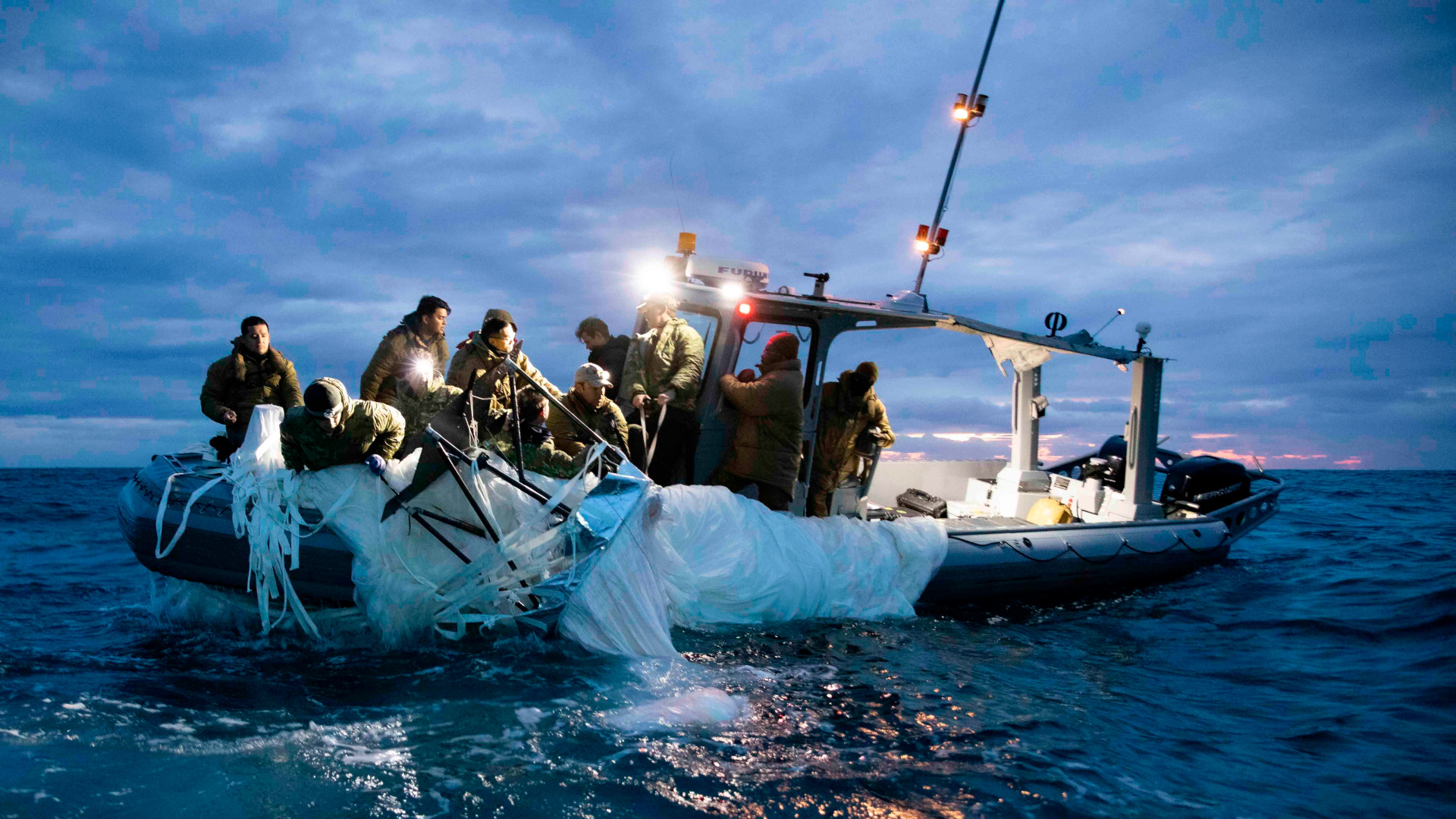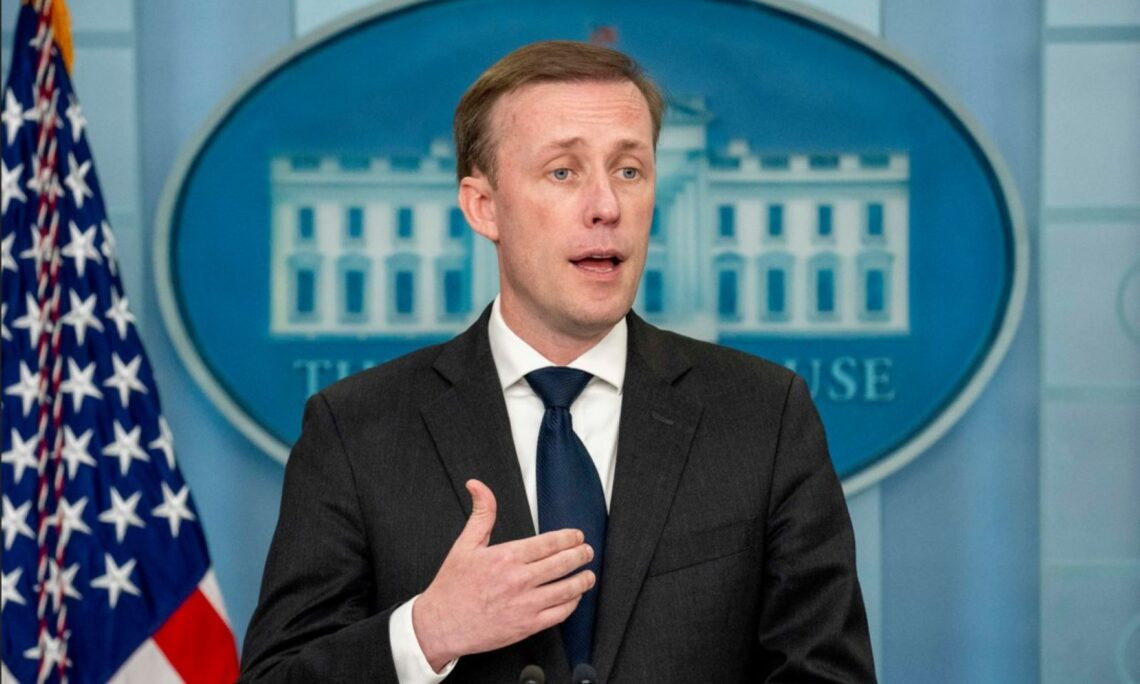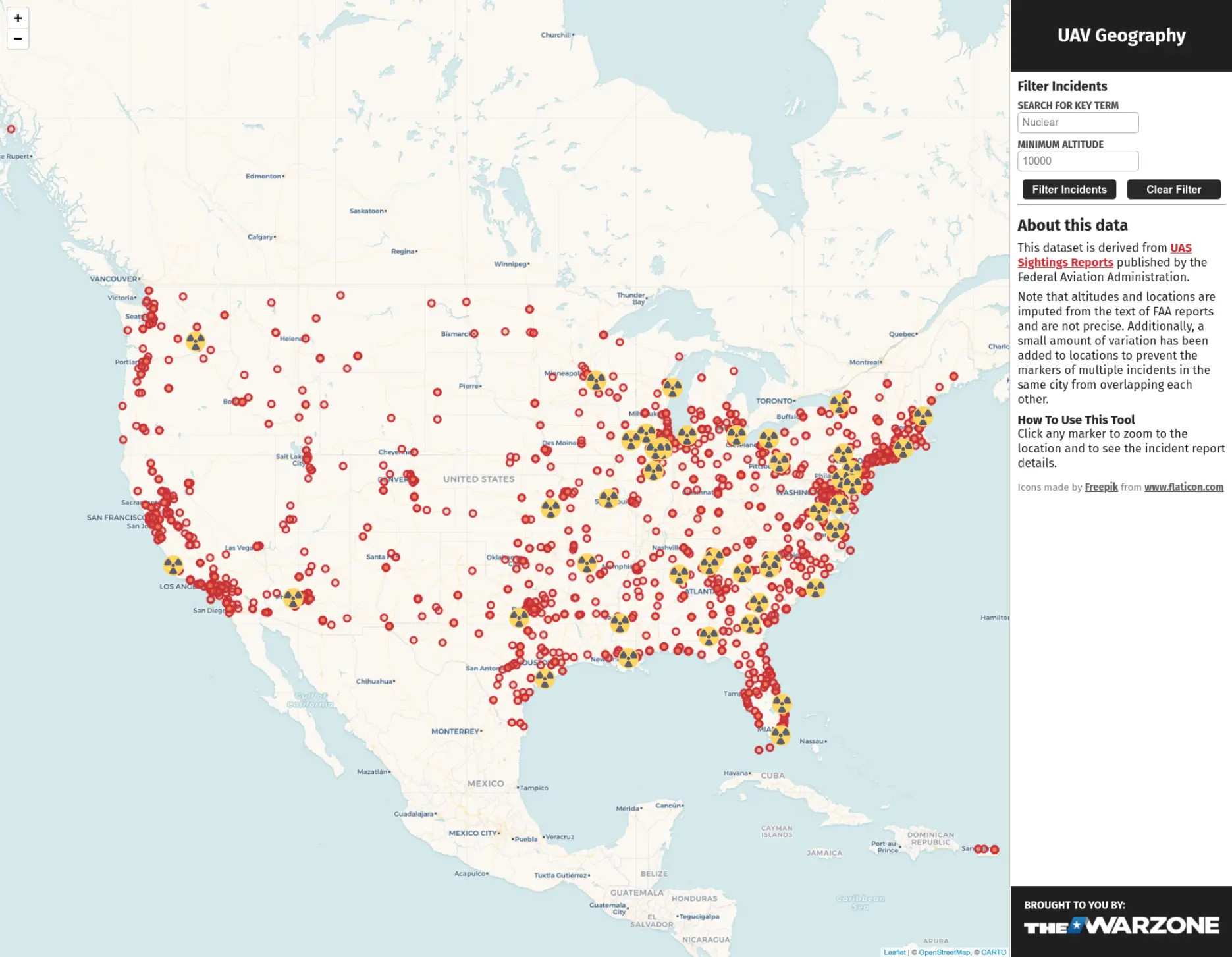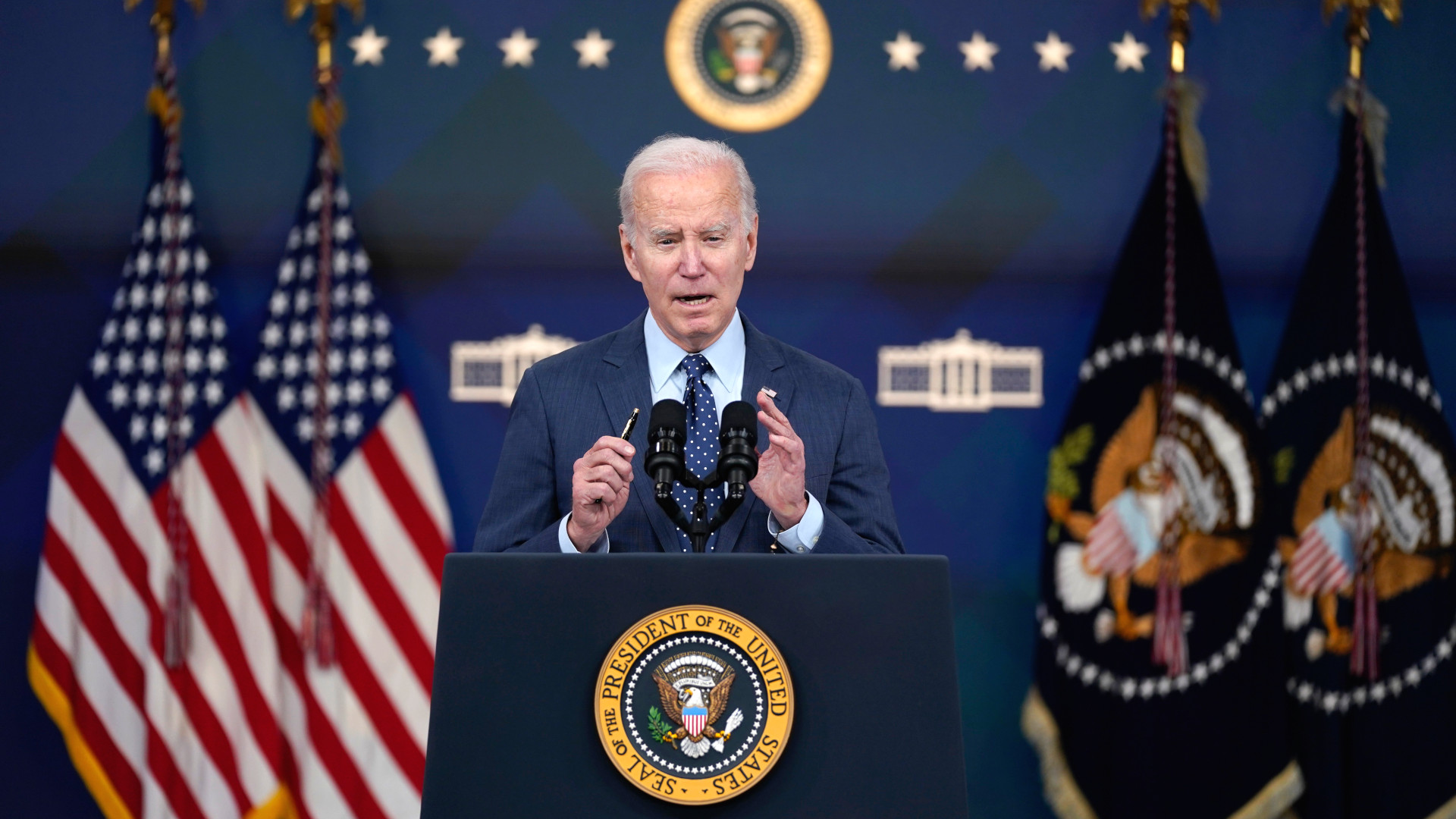President Joe Biden says his administration is seeking new policies and procedures for how to handle unidentified objects intruding into U.S. airspace in the future. These remarks come after U.S. Air Force F-22 Raptor and F-16C Viper fighter jets shot down three still-unidentified objects in U.S. and Canadian airspace between February 10 and February 12. That followed the shootdown of what U.S. officials said was a Chinese government spy balloon in U.S. airspace off the coast of South Carolina on February 4.
Earlier reports had indicated that Biden’s speech today – after which he remained in the briefing room for a few moments, but ultimately answered no questions – came in response to growing criticism over the administration’s transparency, or lack thereof, about these incidents. The President had said previously that he did not believe the initial Chinese spy balloon incident represented a major security breach.
“We don’t yet know exactly what these three [other] objects were. But nothing right now suggests they were related to China’s spy balloon program or that they were surveillance vehicles from any other country,” Biden said. “The Intelligence Community’s current assessment is that these three objects were most likely balloons tied to private companies, recreation, or research institutions, studying weather or conducting other scientific research.”
Earlier this week, U.S. officials had already indicated that the U.S. Intelligence Community (USIC) was actively considering the possibility that the trio of objects that were shot down, but that remain unidentified, were benign. Biden’s comments today also come amid the emergence of evidence that the object downed over Canada’s Yukon territory on Febraury 11, specifically, may have been a so-called “pico” balloon. These are small balloons that are often launched by amateur radio enthusiasts.

The War Zone has reached out to the U.S.-Canadian North American Aerospace Defense Command (NORAD) and to the Canadian Ministry of National Defense for more information about the status of the investigation into that particular incident.
President Biden said that efforts to recover the remains of the three objects that have not yet been conclusively identified were ongoing.
The Royal Canadian Mounted Police subsequently released a statement that they had ended their search for debris from the object shot down over Lake Huron on February 12, “due to several factors including deteriorating weather and the low probability of recovery.” Efforts to locate the remains of the object downed over the Yukon are ongoing, but “conditions are extremely challenging with a very large search area, spanning 3,000 square kilometers, and consisting of rugged and mountainous terrain with a high level of snowpack and harsh winter conditions.”
The process of retrieving any substantial debris from the shootdowns of all three unidentified objects had been proving difficult already for various reasons, as you can read more about in this recent War Zone piece.

Regardless of what the final assessments about these objects may or may not be in the end, the possibility that at least one of these shootdowns may have been of a pico balloon seems to be exactly what is now pushing the Biden administration to seek various new policies, rules, and regulations.
“When I came into office, I instructed our Intelligence Community to take a broad look at the phenomenon of unidentified aerial objects,” Biden said today. “We know that a range of entities including countries, companies, and research organizations operate objects at altitudes for purposes that are not nefarious, including legitimate scientific research.”
“I want to be clear, we don’t have any evidence that there has been a sudden increase in the number of objects in the sky. We’re now just seeing more of them, partially because of the steps we’ve taken to … narrow our radars, and we have to keep adapting our approach to … dealing with these challenges,” he continued. “That’s why I directed my team to come back to me with sharper rules for how we will deal with these unidentified objects moving forward, distinguishing between those that are likely to pose safety and security risks that necessitate action and those that do not.”
Biden said that this would involve changes to the policies and procedures governing the responses to unidentified objects inside U.S. airspace. In his remarks, he also explained that the four shootdowns this month had been conducted within “established parameters” for such actions.
The changes in question will be classified, but Biden promised to share them with Congress in an appropriate setting so that “we don’t give our roadmap to our enemies to try to evade our defenses.”
Biden elaborated on additional policies and other actions that will be taken based on the work of a new interagency working group led by National Security Advisor Jake Sullivan. The planned creation of this team was announced earlier this week.

“First, we will establish a better inventory of unmanned airborne objects in space above the United States airspace, and make sure that inventory is accessible, and up to date,” the President explained. “Second, we’ll implement further measures to improve our capacity to detect unmanned objects in our airspace.
“Third, we’ll update the rules and regulations for launching and maintaining unmanned objects in the skies above the United States of America,” he continued. “And fourth, my Secretary of State [Antony Blinken] will lead an effort to help establish common global norms in this largely unregulated space.”
Who will necessarily be in charge of implementing or otherwise managing any of these measures, aside from the State Department mandate to push for new international action, remains unclear. Some members of Congress have already questioned why the Pentagon’s new office focused on such issues, the All-domain Anomaly Resolution Office (AARO), is not being more heavily utilized in the current context.

Among AARO’s main duties is to maintain a robust database of reports on sightings of so-called unintended aerial phenomena (UAP), still commonly referred to colloquially as unidentified flying objects, another relevant data. The War Zone just yesterday explored in detail various factors, including legal authorities and other bureaucratic issues, that could be hampering AARO’s contributions and that could very well change as a result of these recent shootdowns.
The Biden administration has already been pushing for stronger rules and regulations surrounding the use of various tiers of uncrewed aircraft domestically due to the very real dangers these systems may pose to a variety of military and non-military targets. The War Zone has previously compiled an interactive online database of thousands of drone incidents recorded by the Federal Aviation Administration (FAA), giving a good sense of the scope and scale of the potential issues that already exist in that realm.

With regards to balloons, it is worth noting that the FAA currently does not require operators to seek any sort of clearance before launching them as long as their payloads are under 4 pounds (1.8 kilograms). This covers virtually all typical pico balloons.
Biden did stress that not all high-altitude aerial activity over U.S. territory is benign and pledged to continue to take whatever steps might be necessary to defend the homeland. He said specifically that the shootdown of the Chinese spy balloon on February 4 was intended to send a “clear message” that “the violation of our sovereignty is unacceptable.”
The U.S. government has already levied sanctions against six Chinese companies linked to the People’s Liberation Army’s high-altitude balloon surveillance program. At the same time, the President said his administration would continue to seek to engage diplomatically with Chinese authorities over the incidents and that he hoped to speak directly to his counterpart in China, Xi Jinping, soon.
There are, of course, various serious questions that remain unanswered. Chief among these is why are these various policy or procedural changes only being made now. Biden himself today said that he had specifically directed the USIC to take a closer look at the matter of unidentified objects in U.S. airspace shortly after taking office in 2021. American officials had reportedly concluded enough about the Chinese spy balloon program to brief multiple members of Congress on it before the end of last year in classified settings. Deeper intelligence analysis also notably led to retroactive determinations that Chinese surveillance balloons had previously flown over various areas of U.S. territory, including in the continental United States.
There are already strong indications that the only reason the Biden administration made a public disclosure about the Chinese government’s high-altitude balloon surveillance efforts at all was the undeniable appearance of one of them over Montana at the beginning of this month. This was the one that was shot down off South Carolina’s coastline. The U.S. government subsequently revealed that it had been aware of it floating inside airspace over the United States for days before the first official announcement.

The steps that Biden said today are now being taken are certainly welcome, but again, the underlying issues are hardly new. These are also issues that the U.S. military, especially, has said for years now that it is taking more seriously because of the potential national security threats involved. The War Zone regularly reports on the very likely possibility that many UAP sightings are actually assets belonging to adversarial actors, laying out a particularly detailed case for this nearly two years ago.
If nothing else, Biden’s speech today only further underscores that there is much work still to be done when it comes to tackling the very real issues surrounding identified objects flying in and around U.S. national airspace.
Howard Altman contributed to this story.
Contact the author: joe@thedrive.com

